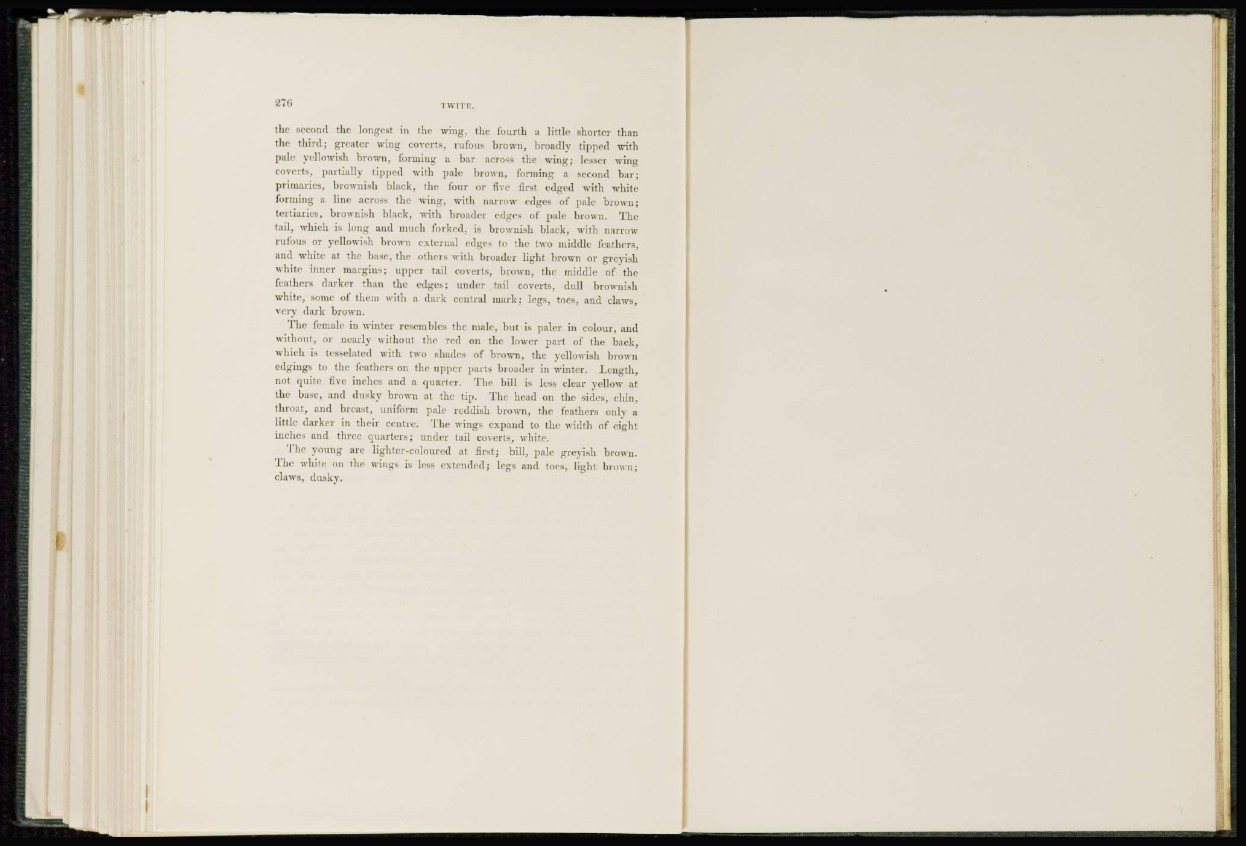
the second the longest in the wing, the fourth a little shorter than
the third; greater wing coverts, rufous brown, broadly tipped with
pale yellowish brown, forming a bar across the wing; lesser wing
coverts, partially tipped with pale brown, forming a second bar;
primaries, brownish black, the four or five first edged with white
forming a line across the wing, with narrow edges of pale brown;
tertiaries, brownish black, with broader edges of pale brown. The
tail, which is long and much forked, is brownish black, with narrow
rufous or yellowish brown external edges to the two middle feathers,
and white at the base, the others with broader light brown or greyish
white inner margins; upper tail coverts, brown, the middle of the
feathers darker than the edges; under tail coverts, dull brownish
white, some of them with a dark central mark; legs, toes, and claws,
very dark brown.
The female in winter resembles the male, hut is paler in colour, and
without, or nearly without the red on the lower part of the back,
which is tesselated with two shades of brown, the yellowish brown
edgings to the feathers on tin1 upper parts broader in winter. Length,
not tpiite five inches and a quarter. The bill is less clear yellow at
the base, and dusky brown at the tip. The head on the sides, chin,
throat, and breast, uniform pale reddish brown, the feathers only a
Httle darker in their centre. The wings expand to the width of eight
inches and three quarters; under tail coverts, white.
The young are lighter-coloured at first; bill, pale greyish brown.
The white on the wings is less extended; legs and toes, light brown;
claws, dusky.